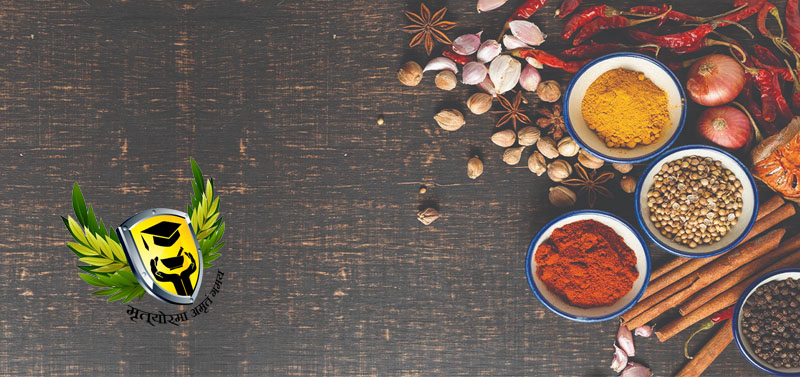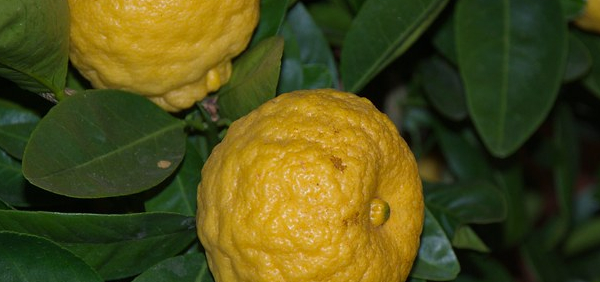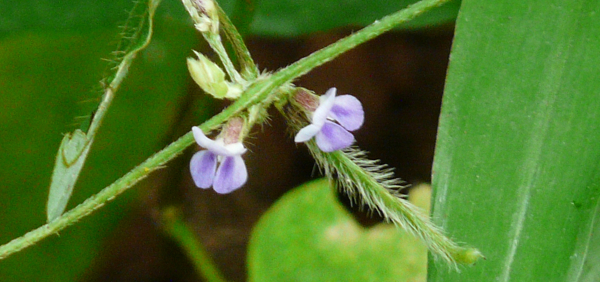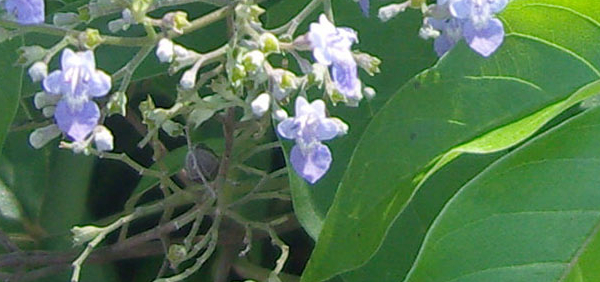sudarshana :
 Crinum asiaticum (poison bulb, giant crinum lily, grand crinum lily, spider lily) is a plant species widely planted in many warmer regions as an ornamental. It is a bulb-forming perennial producing an umbel of large, showy flowers that are prized by gardeners. All parts of the plant are, however, poisonous if ingested. Some reports indicate exposure to the sap may cause skin irritation
Crinum asiaticum (poison bulb, giant crinum lily, grand crinum lily, spider lily) is a plant species widely planted in many warmer regions as an ornamental. It is a bulb-forming perennial producing an umbel of large, showy flowers that are prized by gardeners. All parts of the plant are, however, poisonous if ingested. Some reports indicate exposure to the sap may cause skin irritationHISTORICAL AND MYTHOLOGICAL REVIEW:
In Southeast Asian countries, C. asiaticum has a considerable medicinal reputation as a potent folk medicine in the treatment of injury and inflamed jointsTaxonomical Classification
Kingdom: Plantae - Plants
Subkingdom: Streptophyta
Superdivision: Spermatophyta - Seed plants
Class: Magnoliopsida - Dicotyledons
Family: Amaryllidaceae
Genus: crinium
Species: Crinum asiaticum
VERNACULAR NAMES
Sanskrit: sudarshana, sudarshan, vishamandala, nagadamani, somavalli, cakrangi, madhuparnilaEnglish: poison bulb / Crinum Lily/ Spider Lily.
Hindi: Sudarshana/ Chinder/ Chintaara/ Badakanvar
Urdu: Nagdaun
Telugu: Kesarchettu/ Vishamugali
Bengali: Sukhadarshana/ Banakanur
Marathi: Gadambi Kanda
Konkani: Kirathi Maari
Oriya: Arsa/ Arisa/ Hatikanda
Gujarathi: Nagadamani, Nagrikanda
Tamil: Vishapungila
Malayalam: Pulattali
Kannada: Vishamugali
Arabic: Haliyon
Chinese: Quen Chou Lan
Ceylon: Visha Mungil
Burma: Koyang
Nepal: हाडे फूल Haade Phool
Varities:
Crinum asiaticum ‘VariegatumSynonyms
Synonyms in Ayurveda: sudarshana, sudarshan, vishamandala, nagadamani, somavalli, cakrangi, madhuparnila- Nagdaman – The big wide leaves resemble a snake hood.
- Medhi - It improves memory.
- Rakt Pushpi – Pink Striped trumpet lily is another name in English for Crinum latifolium, which is Sudarshana. Crinum asiaticum has white flowers.
- Ratnamala – Because the flowers are beautiful and grow from umbel in a circular pattern
- Vishamandal - Because the leaves juice (10-20 ml dosage) can be used as emetic and purgative to get rid of ingested poison.
- Vritt Pushpa – Because the flowers grow in a circular pattern.
- Kandali – Sushruta described Crinum defixum as this plant.
- Jambu – The fruit resembles Jambu fruit i.e. Java apple or Jamun. The fruit also resembles onion bulb.
- Dudarshana – It’s also called Dudarshan, as the crushed fruit gives foul smell.
- Chakravaha – Because the flowers grow on umbels and in circular pattern.
- Madhuparnika – The leaves taste sweet and bitter
Rasa: Madhura Tikta
Guna: Ruksha Teeskhsna
Veerya: Ushna
Vipaka: Maduram
Karma: Vathakaphahara
Plant’s root and leaves are known to induce vomiting, perspiration, and purify the bowels.
Plant’s leaves, combined with castor oils and warmed up, are commonly applied to relieve whitlows and other conditions, affecting fingers and toes. As an alternative one may take bruised plant leaves and combine them with castor oil to serve the purpose. The plant is also taken to relieve joint inflammations and sprains.
Cultivation:
Cape Lily and other lilies of the Crinum genus can be grown either from seed or bulbs. If growing from bulb then they should be planted at a depth of 20 cm at the end of spring. If you plant from seed then you should use fresh seed as soon as it is ripe and plant at a depth of about 6mm. The plants should be spaced between 45 cm (small species) to 80 cm (large species) and grown in a sunny area of the garden. They like to grow in an humus rich moist soil that is well drained. if you first plan to grow cape (Crinum) lilies indoors first then again fresh seed should be used, it takes from one to three weeks to germinate lilies and it should ideally be done at a temperature of 15 to 20 degrees centigrade.Propogation:
Harvesting:
Flowering and Fruiting Time : August - NovemberPhytochemistry:
Crinamine, lycoricidine, hamayne (bulbispermine, demethylcrinamine), isocraugsodine, palmilycorine, lycoriside, ambelline, crinasiatin, hippadine, bakonine, pratorimine, crinine, powelline, ungeremine, criabetaine, criasbetaine, crinasiadine, crinasiatine, phenanthridine II and others. Lycorine and related phenanthridine alkaloids. Root contains alkaloid narcissine (lycorine) & bulb contains lignanophenanthridine alkaloid - crinasiatine and crinasidadine.PHARMACOLOGY:
Formulation : Sudarshana ghana vatiParts used for medicinal purpose
Leaves, Root, Root tuber, ,Dosage:
- Bulb Powder : 1-2 gm
- Juice of bulb: 56-112ml (as emetic)
- Leaves Juice : 5 to 10ml
Antidote:
No information as yet.Substitute:
-used as a substitute for ipecacuanha.Commercial value:
Morphology:
Habitat : Habit: An ornamental tuberous, perennial herb, root stock bulbous, bulb extended as neck to, or above ground level as pseudostem.
Bulb (pseudostem) : gowning upto 1.2 m., the bulb it self is unusual because there is not much to it. From the basal plate the stout leaves make a pseudostem that can reach a foot or more above ground.
Leaves : Inflorescence: Many flowered (20-50), umbellate cyme on a stout scape and subtended by 2- large spathaceous bracts.
Flowers are fragrant, 20 to 40, each subtended by a thin, narrow bracteole. Perianth tube is greenish, about 1 centimeter long, the lobes spreading, white, linear, recurved or revolute, about 8 centimeters long and 8 centimeters wide. Filaments are very slender, free and purplish above. Fruits are subglobose, about 5 centimeters in diameter.
Geographical distribution:
It is found throughout tropical Indian subcontinent, Ceylon as wild or cultivated. It is distributed also South China, Java, Timor and other areas of Malayan Islands, Pacific regions and extends to N. and E. Australia. It is native to tropical Asia and now it is a favorite landscape / ornamental plant.ECOLOGICAL ASPECT:
Ecosystems composed with a great variation of species are more sustain than the ecological areas with less species diversity. Utilization of plants are also categorized in many ways like for food source, medicine etc. As per knowledge and potential of the plant species are utilized for varied purposePlant conservation:
Members of the Crinum family are not the easiest to look after, they should be fertilised about three times a year. The leaves and flowers should be cut off once they have died. If you live in a very cold area then the bulbs should be removed from the garden in the autumn, and stored indoors in a cool place. It may take as long as five years before you see flowers from your Crinum lilies.General Use:
Sudarshan(Crinum latifolium) is a medicinal herb that is used from time immemorial. The leaves of the plant are non-toxic and has anti-inflammatory (swelling reducing), analgesic (pain relieving), antitumor, immune stimulating, anti-bacterial, anti-fungal effects, uterine fibroids, detoxification and tissue regeneration activities. The bulb is said to be poisonous.
For the medicinal purpose the bulb and leaves are used.
Therapeutic Uses:
Biliousness, diaphoretic, earache, elephantiasis, expectorant, stranguary, tonic, urinary troubles, thermogenic, expectorant, vulnerary, laxative, carminative, anthelmintic, diuretic, diaphoretic, nauseant, emetic, anti-inflammatory, antipyretic and useful in vitiated conditions of pitta and kapha, cough, bronchitis, tumours, wounds, dyspepsia, flatulence, urinary troubles, strangury, intermittent fever and general debility.Systemic Use:
Pharmacological:
Emetic, diaphoretic, purgative, antibacterial, antiviral, anticancer, antitumour, mast cell degranulation, antimitotic and membrane stabilizing.Clinical trials:
Crinum asiaticum L., Sp. Pl. 292. 1753; Hook. f., Fl. Brit. India 6: 280. 1892; Gamble, Fl. Pres. Madras 1504(1051). 1928; Manilal & Sivar., Fl. Calicut 290. 1982; Mohanan, Fl. Quilon Dist. 415. 1984; Antony, Syst. Stud. Fl. Kottayam Dist. 395. 1989; Babu, Fl. Malappuram Dist. 802. 1990; Sivar. & Mathew, Fl. Nilambur 719. 1997Research:
- D K Ved, Suma Tagadur Sureshchandra, Vijay Barve, Vijay Srinivas, Sathya Sangeetha, K. Ravikumar, Kartikeyan R., Vaibhav Kulkarni, Ajith S. Kumar, S.N. Venugopal, B. S. Somashekhar, M.V. Sumanth, Noorunissa Begum, Sugandhi Rani, Surekha K.V., and Nikhil Desale. 2016. (envis.frlht.org / frlhtenvis.nic.in). FRLHTs ENVIS Centre on Medicinal Plants, Bengaluru. http://envis.frlht.org/plant_details.php?disp_id=664
Precautions:
No information as yet.Toxicity studies:
No information as yet.Use in other system of medicine:
CONCLUSION:
Crinum is a genus of about 180 species comprising family of various beautiful perennial plants. They are good for decoration, gardens, bouquets and also known as various types of Lilies like Spider lily, Trumpet lily, and Swamp lily and so on. Crinum is basically a tropical plant growing in Asia, South East Asia, Australia, Pacific islands and spread up to Caribbean, Florida and Louisiana.KEY WORDS: sudarshana Crinum asiaticum Linn.
- » Classification and names of sudarshana
- » Synonyms and definitions of sudarshana
- » Drug Properties of sudarshana
- » Chemical Constituents of sudarshana
- » Standardization of sudarshana
- » Parts used and Dosage of sudarshana
- » Morphology and Histology of sudarshana
- » Distribution and Conservation of sudarshana
- » Cultivation of sudarshana
- » sudarshana in the market
- » Medicinal Uses of sudarshana
- » Researches and clinical trails of sudarshana
- » sudarshana in other sytems of medicine
- » Ayurvedic formulations with sudarshana
- » Images of sudarshana













